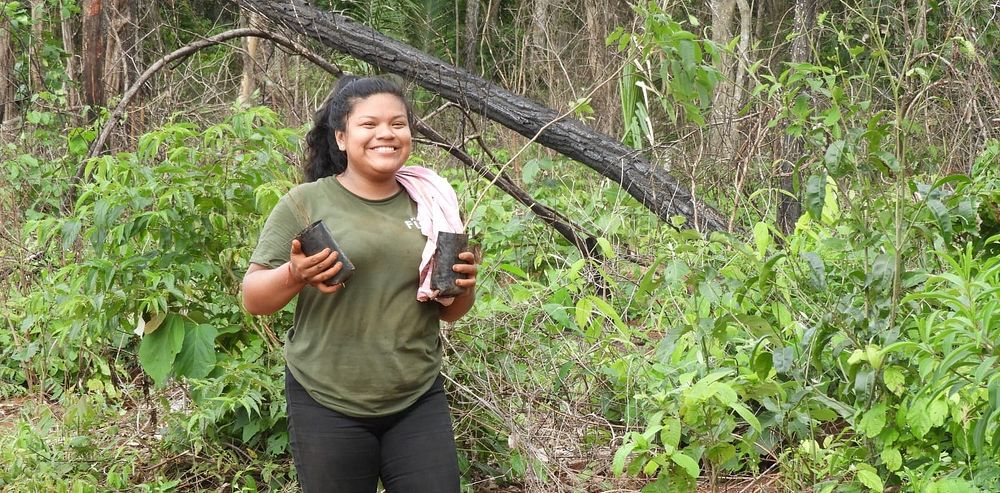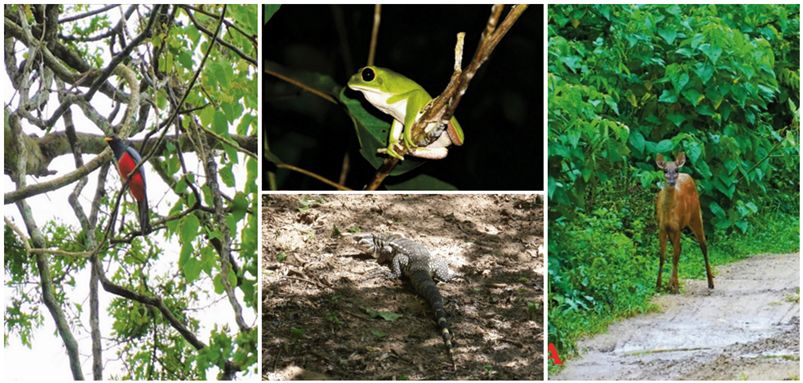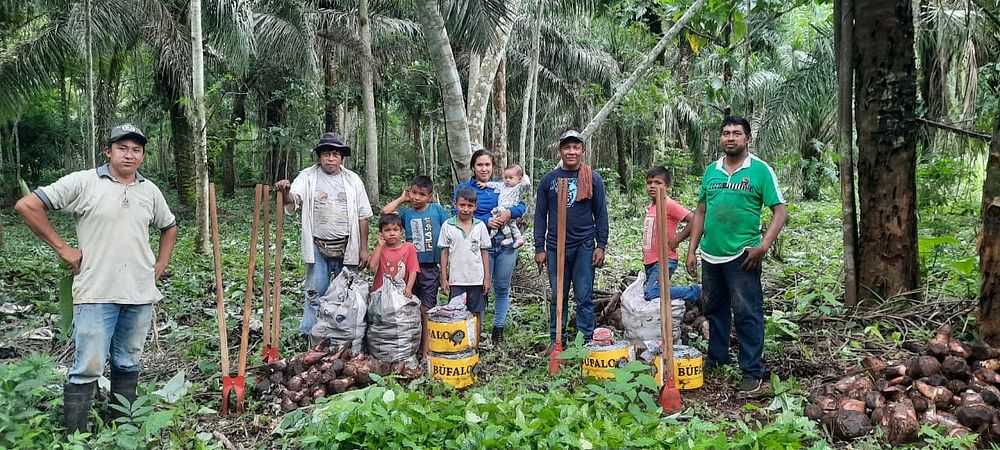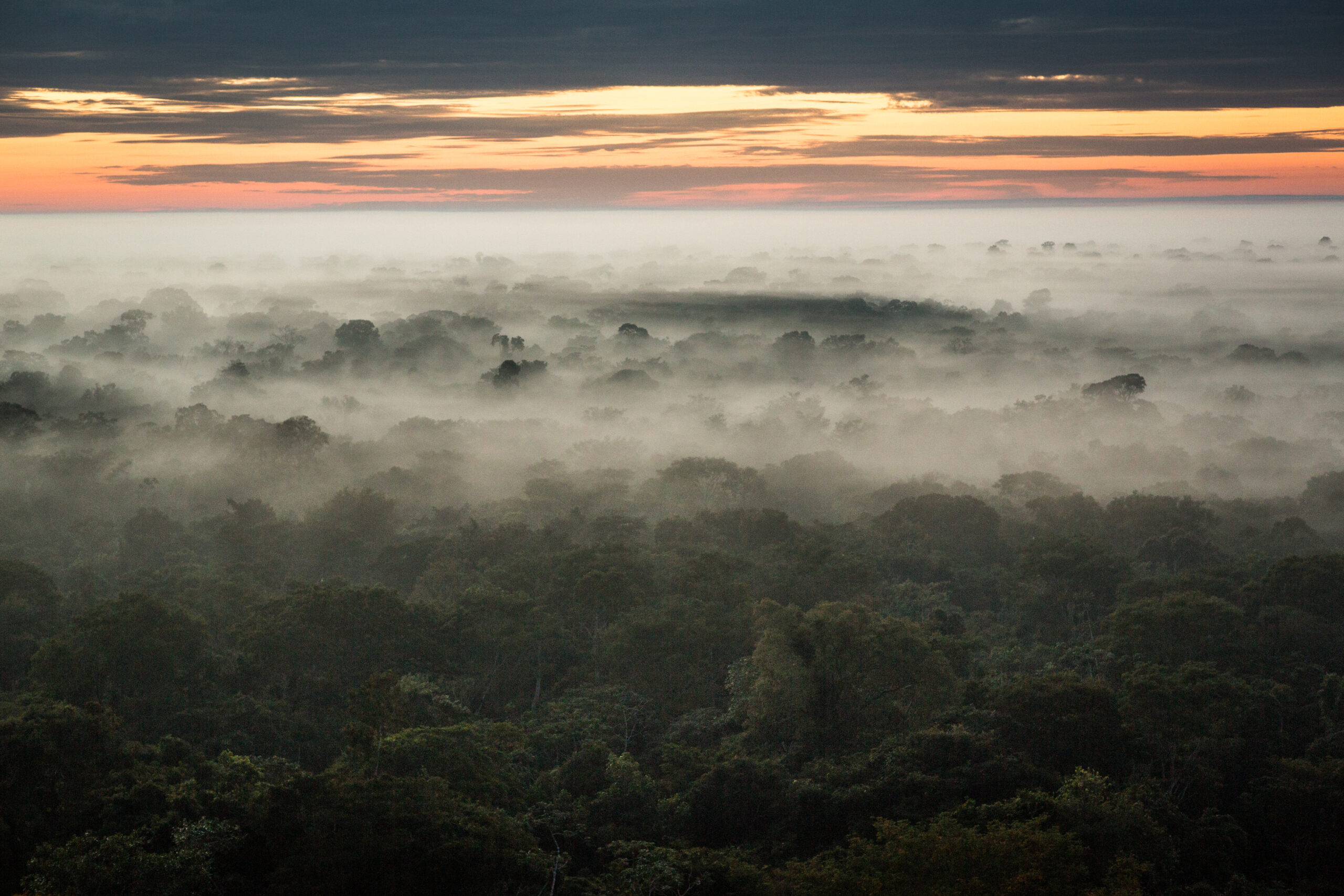Forests of the World, our partner APCOB, and the Indigenous Peoples Chiquitano, who are working to restore burned areas in Chiquitano territories in eastern Bolivia—and the results have exceeded all expectations.
The original ambition was to restore 6,000 hectares of forest by next August, but the project is now approaching 14,000 hectares, with nearly a year still left to go. Additionally, forest fires have decreased by 60 percent, and wildlife is thriving in the restored areas.
The restoration project, supported by the Erik Kauffeldt Foundation, was launched in response to the devastating wildfires that struck Bolivia in 2019 and 2020. Over 200.000 hectares were affected by wildfire in the Chiquitano forest alone within the Monte Verde territory, causing significant harm to plants, animals, and the Indigenous Peoples Chiquitano, who rely heavily on the forest’s resources.
The Chiquitano forest is a transitional ecosystem between rainforest and dry forest, making it particularly vulnerable to drought and wildfires—challenges exacerbated by rising temperatures due to climate change and deforestation for cattle and soybean production. As a result, the restoration plan includes measures to make the forest more resilient to future fires.
“Fire prevention is carried out through awareness campaigns, upgrading equipment, establishing firebreaks, and much more,” explains Jens Kanstrup, technical advisor at Forests of the World. These initiatives seem to be effective, as forest fires in the same area were reduced by 60 percent in 2022.
The project’s original goal was to restore 6,000 hectares of forest, but the latest tally shows a remarkable 13,863 hectares. This expansion is partly due to additional support from the Danish Ministry of Foreign Affairs, which enabled the inclusion of not just two Indigenous Peoples villages, Río Blanco and Nokoborema, but now a total of 10 villages.
The expansion is credited to the positive outcomes observed from the restoration model used in Río Blanco and Nokoborema, prompting more villages to join the project. While reforestation plans are tailored to each village’s unique conditions, they follow consistent principles within a holistic framework, says Jens Kanstrup:
“They are built around three core components: planting new trees, preventing wildfires, and establishing agroforestry systems. Additionally, we emphasize forest biodiversity by selecting tree species that have both high timber value and promote biodiversity. In this way, we create the best conditions for animals, plants, and local communities alike.”

The Chiquitano people work with village nurseries to breed native tree species that grew before the forest fires and trees suitable for agroforestry. Photo by APCOB
Spider Monkeys, Tapirs, and Wild Cat Tracks
If the animals of the Chiquitano forest had their own newspaper, this article would undoubtedly make the front page. The positive results from the restoration and climate adaptation efforts in their habitat are fantastic news for the curious creatures that depend on a healthy, diverse environment—just as the environment depends on them.
The ecosystem in the vast Monte Verde territory, part of the Chiquitano forests, is characterized by an incredibly diverse flora and fauna. This is largely because it is a transitional forest between the wet Amazon region and the dry “Gran Chaco” area. Consequently, a major focus of the restoration plans, developed collaboratively by Forests of the World, APCOB, and local villagers, is to create the best possible conditions for biodiversity.
Our Bolivian partner organization, APCOB, conducted a survey to document wildlife in four restored forest areas, including the two pioneer villages of our project, Río Blanco and Nokoborema. The results of their investigation were overwhelmingly positive.
During a trek spanning a little over 60 kilometers—most of it conducted at night—they recorded 99 species in total. This included 22 amphibians, six reptiles, 51 birds, and 20 medium-to-large mammals. Among their findings were spider monkeys, tapirs, armadillos, coatis, and Amazon parrots, to name just a few. They even discovered tracks from a puma and other large predators, a promising sign that the ecosystem’s food chain is in balance.
The puma tracks weren’t the only evidence of wild cats in Monte Verde. Its smaller relative, the margay, was also spotted. The margay is a small, elusive wildcat that prefers to hunt under the cover of darkness in the Chiquitano forest. With its large, brown eyes, ocelot-like coat, and size comparable to a domestic housecat, it’s a fascinating inhabitant of the forest. If you’re looking for a meaningful holiday gift for children, consider purchasing a margay-themed poster her.

Whether they were looking on the ground or in the trees, the diverse biodiversity of the Chiquitano Forest came to light as APCOB surveyed the restored areas. Photo by APCOB
Indigenous Peoples Are the Key
Collaboration with the Indigenous Peoples Chiquitano is a crucial part of the restoration project in Bolivia. Indigenous Peoples make up just five percent of the world’s population, yet they help protect a remarkable 80 percent of the Earth’s biodiversity. Furthermore, research consistently shows that Indigenous and traditional peoples are the best guardians of the world’s forests.
This highlights the importance of incorporating the Chiquitano People’s knowledge and practices into the work of restoring the ecosystems in Monte Verde. For this reason, workshops and collaborative projects are regularly held in the villages, allowing time for updates, reflection, and the exchange of ideas.
Agroforestry is a key component of the restoration effort in all of the villages. You might first wonder why agroforestry is necessary when the forest is being restored. Shouldn’t forests just be allowed to remain forests?
But agroforestry is actually a much bigger part of the solution in the quest for a world with far more forested landscapes than one might think. By establishing agroforestry systems and planting beneficial shade trees for crops like cocoa, coffee, and vanilla in areas that were once cleared for farming, more tree cover and biodiversity are restored. Farmers can increase their income and gain other benefits such as spices, natural medicines, firewood, and clean water—all while helping to climate-proof their areas. While agroforestry is not technically the same as forest, and areas within forests should not be cleared for it, it is a far gentler way to use the land than farming on cleared fields. It also provides farmers with many of the resources they would otherwise harvest from the forests. In this way, agriculture becomes more integrated with nature.
We are so passionate about agroforestry that we have dedicated our next Forest & People magazine to this theme. So, if you would like to learn more about agroforestry and receive a physical copy of our magazine, you are most welcome to become a member, where you can choose to have it delivered right to your door.

Indigenous Peoples Chiquitano establishing agroforestry as part of the Chiquitano Forest restoration project. Photo by APCOB
Press Contact
Jonas Schmidt Hansen
Who is Forests of the World?
We work to preserve the world’s forests, both in Denmark and the world’s tropical forests.Our focus areas include sustainability, Indigenous Peoples and local engagement.
